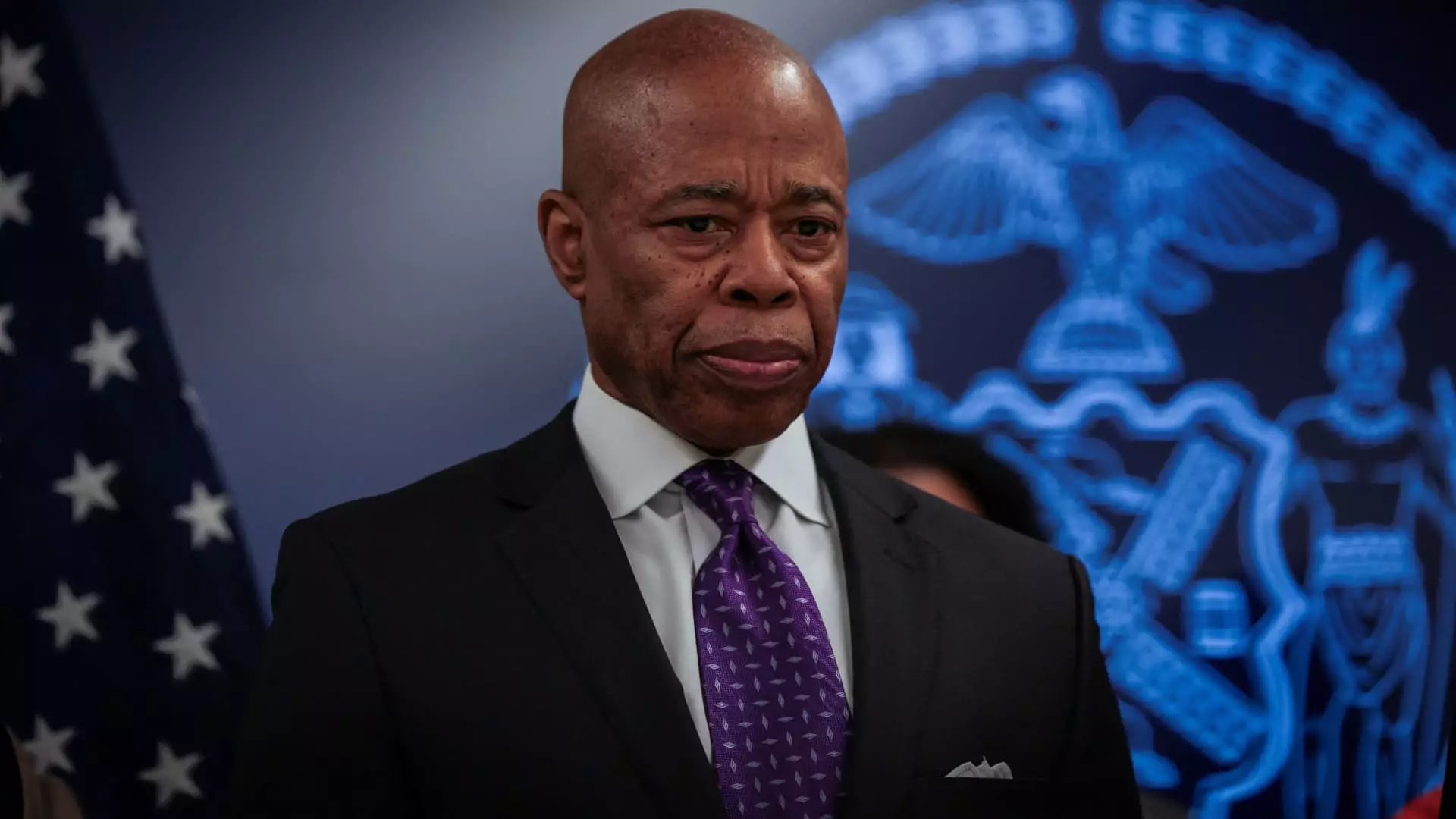The ongoing corruption case against New York City Mayor Eric Adams has taken a dramatic turn as a federal judge chooses to postpone the trial indefinitely. The decision raises questions not only about the legal ramifications for the mayor but also about the broader political landscape in New York and its potential vulnerability to partisan maneuvering. This situation encapsulates the intersection of legality and politics, demonstrating how entwined these realms can be.
U.S. District Judge Dale Ho’s ruling to delay the corruption trial comes amid a controversial request from the Justice Department for the charges to be dropped. This development is particularly complex given the political context in which these decisions are being made. The request for dismissal stems from a directive issued by Acting Deputy Attorney General Emil Bove, a figure known for his ties to former President Donald Trump. Notably, Bove’s recommendation was met with resistance within the Justice Department itself, leading to the resignation of several prosecutors who viewed the directive as a departure from justice and fairness.
Adams, charged with accepting bribes from Turkish nationals, has consistently maintained his innocence. However, the backdrop of the case is clouded by the political affiliations and motivations involved, making it difficult to separate legal proceedings from the potential for partisan influence. The mayor’s allegations that the Biden administration initiated the charges as retaliation for his discord with its immigration policies only heighten this complexity.
The ongoing saga not only affects Adams personally but also reflects broader themes regarding governance and public trust. When leaders face allegations of misconduct, it erodes public confidence in the political system. This case has ignited calls for Adams to resign from several Democratic political figures within New York, emphasizing the tension between maintaining party unity and upholding ethical governance. The scenarios evolving within the city suggest that partisan divisions may lead to challenges in governance that could have significant consequences for the administration’s effectiveness, particularly in relation to critical issues like public safety and immigration enforcement.
More troubling for the Democratic Party may be that there exists a perception of compromised integrity, where the lines between serving the public interest and engaging in political gamesmanship appear blurred.
The Role of Media and Public Perception
Another critical element at play is the role of the media in shaping public perception regarding the corruption case. As the details of the prosecution and subsequent call for dismissal unfold, news outlets report on the shifting allegiances and the political motivations at play. This has resulted in an environment where the complexity of legal issues is often overshadowed by sensationalized narratives.
Media narratives can sway public opinion, and in a fractious political climate, they can exacerbate divisions among constituents. For Adams, navigating this public landscape will be crucial for his political survival, especially as he prepares for re-election amidst ongoing legal challenges.
As the situation develops, the critical question remains: what does the future hold for Eric Adams and New York City’s political scene? His relationships with both Trump and the Democratic establishment create a precarious position. For a city as diverse and populous as New York, its leadership’s navigational prowess in times of crisis could serve as either a cautionary tale or a guide for other leaders facing similar anguish.
While Adams has pledged to fight the charges and has garnered some support, the fragility of his position may require reevaluation of strategies going forward. In this politically charged atmosphere, the decisions made by public officials can lead to either profound resilience or pervasive instability, impacting the trajectory of governance and public trust for years to come.
The developments in the Adams case echo a broader narrative about power, accountability, and the increasingly intertwined nature of law and politics. It serves as a salient reminder of the delicate balance that must be navigated by those in positions of authority. As this case continues to unfold, it will undoubtedly leave an indelible mark on New York City’s political fabric.


Leave a Reply